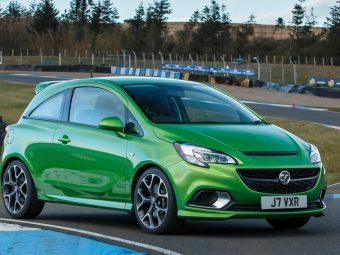By James Martin, July 26, 2017
Tech that can communicate with traffic lights
Well-known vehicle manufacturer Audi is currently looking into technology which will effectively enable vehicles to talk to nearby traffic lights. Deemed ‘vehicle-to-infrastructure’ technology — or V-to-I for short — the revolutionary concept will see drivers being informed when a set of traffic lights are about to turn green. It will also act as a means of warning motorists if they won’t have enough time to make it through the lights before they turn red. However, V-to-I is far from a one-way conversation. This is because the technology will also make use of the cloud to send safety information and other operational data wirelessly from vehicles to traffic lights. Audi hopes that its concept will help to ease congestion as well as bring down a number of crashes witnessed on roads. Pom Malhotra, the General Manager of the Connected Vehicles division at Audi, commented: “This feature represents Audi’s first step in vehicle-to-infrastructure integration. “In the future we could envision this technology integrated into vehicle navigation, start/stop functionality and can even be used to help improve traffic flow in municipalities. These improvements could lead to better overall efficiency and shorter commuting times.”Traffic updates advertised on buses
Drive behind a bus that takes the 344 route from Clapham Junction to Liverpool Street in London and you could soon be keeping up-to-date with traffic news in the area. This is a result of a six-month trial that is being launched by Transport for London (TfL), which will see digital information boards being installed into the back windows of the transport. Once activated, the boards will make use of GPS technology in order to display accurate and live traffic information, taken straight from TfL’s 24-hour traffic control centre. Garrett Emmerson, the Chief Operation Officer for Surface Transport at TfL, acknowledged: “This innovative use of one of the capital’s most iconic features – the London bus – will help all road users.” While the trial will be introduced exclusively on the 344 route, if it’s a success there are already plans in place to expand it onto the 415 route that travels from Tulse Hill to Liverpool Street and possibly the whole of London.Smart cities
NXP and Siemens are collaborating in order to create technology that could usher in an exciting new era of connected vehicles. Making use of in-vehicle chips designed by NXP which are incorporated with smart infrastructure that is being overseen by Siemens, the devices will allow vehicles to talk to each other within a city. As a result, all of the following could soon be possible:- The ability for traffic lights to turn green when roads are particularly busy.
- The chance for drivers to be instantly warned about any traffic jams on the road that they are traveling along.
- The opportunity for real-time information about general travel conditions to be communicated straight to vehicles and their drivers.
- The capability for drivers to be informed about any pedestrian crossings, stretches of road with lower speed limits or emergency vehicles that are nearby, via a hi-tech dashboard.
Smart motorways
Heading away from the city, drivers are already getting used to the idea of smart motorways — a concept that functions to actively manage the flow of traffic. Controlled from a regional traffic control centre and the responsibility of Highways England, the idea sees traffic being carefully monitored so that vehicles have the best opportunity to flow freely along a route. Travel along a smart motorway then, and you should be observant of these following features:- A lane that has a red ‘X’ in the electronic signs that hangs over it shouldn’t be driven along.
- The hard shoulder — indicated by a solid white line — shouldn’t be driven along unless otherwise directed to do so.
- The smart motorway’s current speed limit will be indicated by gantries and should be kept to. The speed limit will change depending on the amount of traffic.
- Refuge areas should be used for emergencies at times when drivers can travel along the hard shoulder.








